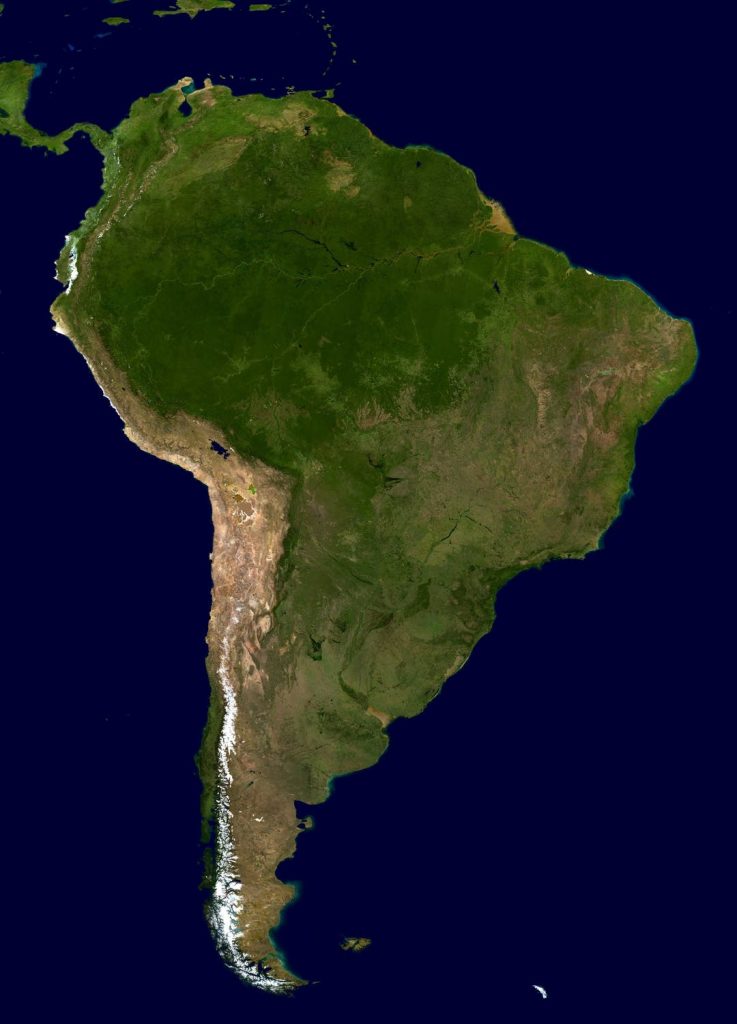Unleashing the untapped potential of Latin America with Cardpay
SPONSORED INSIGHTS
Over the course of 2019, Europe and the US have been taking a back seat to developments coming out of emerging markets, more specifically – Latin America.
Consisting of 650 million people, the continent of Latin America has been picking up traction as a serious contender in the world of ecommerce thanks to its large unbanked population, and quick adoption of Internet and smartphones.
To dig into this topic even more, we sat down with Andrey Novikov, Cardpay’s general manager of LatAm this week. He argues that there’s some seriously exciting potential yet to unleash from Latin America and Cardpay’s ambition is to provide coverage over the course of 2020 – an ambition that is well under way.
FinTech Futures: In your experience of speaking to clients and businesses in and outside of Latin America, have opinions changed towards it as a destination for entrepreneurs and online business?
Novikov: It really has. From the outside perspective, the overall market value of that whole region has grown at an exciting pace. In 2014, for example, Latin America boasted an ecommerce market valued at $33.2 billion. At the time, that was under 10% of Europe, USA and Asia. As we venture through 2020, however; Latin America is poised to nearly triple that number – hitting $94 billion by 2022.
Think about that for a moment, what that’s showing is not just a tripling of value, but that the total value back in 2014 is about on par with Columbia’s ecommerce market size right now!
But yes, attention has been gained, and interest has been peaked when it comes to investing in Latin America. That’s why ecommerce infrastructure investments in the region hit $600 million back in 2017/18, and that’s only going to grow as businesses seek to unlock the unbanked and plug them into the digital marketplace.
FF: What accounts for this increase in investment and explosion of ecommerce?
Novikov: Well this is where the unbanked come into the equation, somewhat. Overall, 70% of the populations in Latin America have no bank account, which locks them out of the online market, by and large. The solution comes from the fintech world, which is exactly what we’re seeing now.
This push to bank the unbanked has also been helped along by the gradual increase in internet access over the last few years. We see this with the tremendous number of people in Latin America that now have a smartphone or access to high-speed internet.
And as these populations steadily get online, we’re going to see far more in the way of shopping there too for the same reasons as we’d see it increase in US, Asia and Europe: more convenience, more variety, more deals.
But with all of these people getting online, whether they’re newly banked through a challenger or not, it raises the concern of how they make payments online.
FF: So, what does this rise in mobile and digital payments mean for businesses in Latin America?
Novikov: For starters, it means that the conventional ways of doing business and making payments will undergo a process of change to cater to this increasingly online user base. Payment solutions like Boleto in Brazil have proven successful at getting unbanked users online, and they’re making their presence well-known to businesses that seek to cater to them.
It’s for that reason that the closest second behind using cards for payments is cash on delivery. Looking over at consumer trends among millennials too: we see that the majority (60%) do most of their shopping online and are the biggest population of digital buyers and sellers. Which means that companies have to be able to cater to this digital generation, doing so would allow those companies to unlock a massive segment of Latin America’s population.
With more online payment and banking solutions now and in the future, users and potential customers will use alternatives to the current methods of payment and buying.
And businesses really need to offer flexibility in the kinds of payments they provide. Same rules apply for companies looking to do business here. They need to make sure they’re hitting all the right “notes” with customers that want to search, traverse your website, and pay in the ways they want.
This is something that we at Cardpay have mastered, thanks to the many years of expertise in the emerging markets.
It’s precisely why we provide access to these locally popular payment methods, lowering the barrier that currently exists between un/banked customers and the online services they want to use. It takes a lot of the unnecessary pain out of taking and processing payments.
FF: How do you see the world of ecommerce evolving from here?
Novikov: As we see more people across Latin America getting online, there’s going to be far more of an incentive for governments of that area to improve regulations and make it easier to do business there if you’re an ecommerce retailer.
For the time-being, Latin America is still up and coming when it comes to internet and mobile adoption for ecommerce. But the fact that it’s managed to accelerate in the number of users and total market value is phenomenal.
We’re already seeing some encouraging changes in the space, and we are definitely going to see it increase at a faster rate over the coming years, especially if countries in the region embrace this market segment.
On the business side of things – flexibility is key – and this is something that ecommerce businesses really need to provide.
At Cardpay, we offer businesses the ability to spread payments out into instalments, set up regular subscriptions and recurring payments. These are all options that customers actively seek out regularly, and companies that anticipate will be able to benefit from having loyal followers and repeat business in the future.
With easier access to ecommerce stores, flexibility when it comes to payment methods, and regulations more conducive to doing business in this region we are going to see growth happening at a greater scale and faster pace.
Over the course of this year, our hope is to really bring together these ecommerce businesses with the millions of people throughout Latin America. That’s why we’re currently underway with offices in Mexico, Brazil and Columbia, with more planned this year.













































